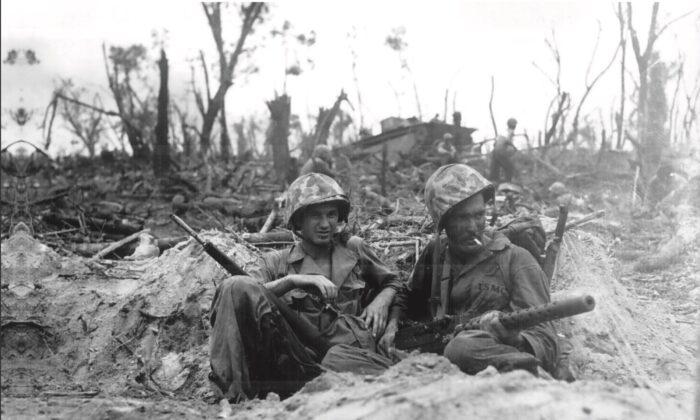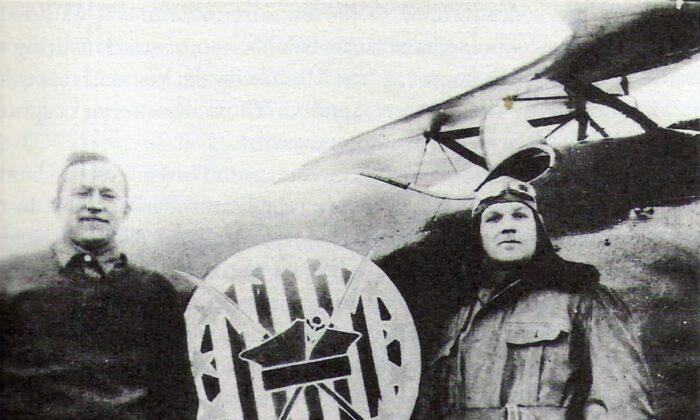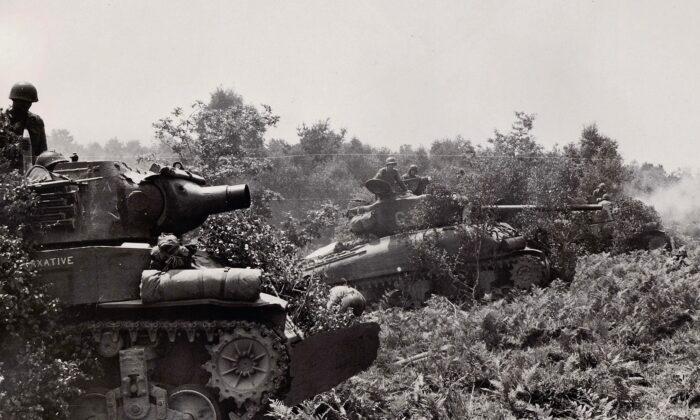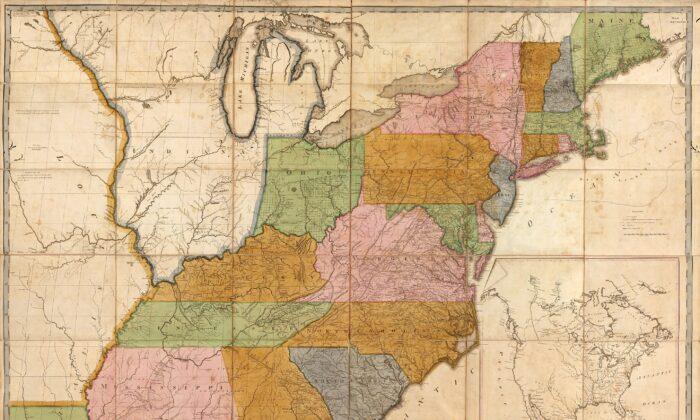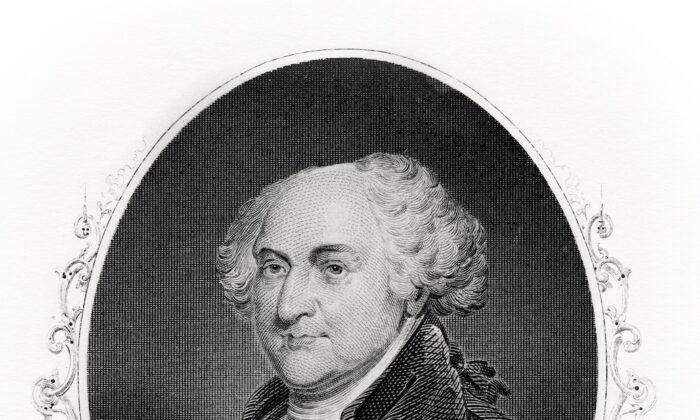We laud as heroes men and women who fight for a cause, or speak moving words, or stand up for timeless ideals—and rightly so. Yet some of the greatest heroes of World War II were the men and women on the home front, who applied their cleverness, tenacity, and famous American entrepreneurial innovation to equip the soldiers abroad with the tools needed for victory. Saginaw Steering Gear, a division of General Motors, was one such company: Its ingenious application of automotive assembly-line principles to the manufacture of the storied Browning M1919 machine gun gave the American GI and his allies the firepower to prevail over tyranny.
As the end of the 1930s approached, the United States faced an unprecedented crisis. The imperialist Empire of Japan, already deeply engaged in a brutal war with China, and Nazi Germany, having completed the “Anschluss” of Austria in March 1938 and immediately pivoting to gobble up the Sudetenland in October, both seemed likely adversaries as conflict loomed. But one critical problem remained: The United States had effectively erased its military power after World War I.
As soon as the soldiers came home from “over there” in 1918 and 1919, the United States, eager to avoid more European entanglements, shrank its military dramatically: from a height of several million conscripts during the war to an army of under 200,000—a military smaller than that of Portugal’s. The weapons to be wielded by this tiny force, too, were hopelessly outdated and poorly maintained. Archival footage from the 1930s shows soldiers training with wooden sticks for bayonets and broom handles for machine guns. As the likelihood of war grew, President Franklin Delano Roosevelt quietly asked several civilian manufacturers to explore whether their factories could be converted to wartime production of armaments.
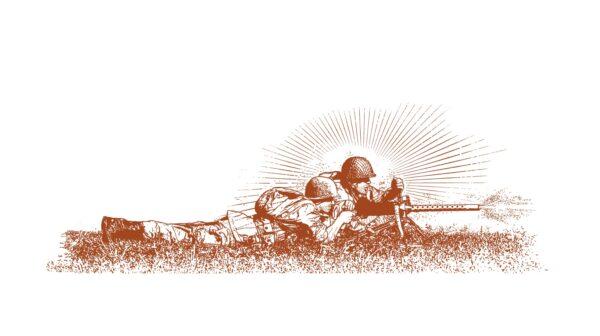
Saginaw Steering Gear, founded in 1906 as “Jacox”—the Jackson, Church, and Wilcox Company—produced its “Jacox gear,” first for Buick automobiles and then for all the vehicles produced by General Motors, after its acquisition in 1909. The division, renamed Saginaw Steering Gear in 1928, was renowned for its precision manufacturing and for manufacturing parts with the tight tolerances—the permissible limits of variation of a part from the design specifications—necessary for the modern automobile. The invasion of Poland on September 1, 1939, galvanized the public into support for military spending, and by 1940 Saginaw Steering Gear was awarded a contract to produce the Browning M1919 machine gun, with the first pilot guns to be completed for review by December 1941.
The Browning M1919, designed by legendary inventor John Moses Browning, was an air-cooled improvement on the earlier water-cooled M1917, but the improved action had a major downside: It was a complicated firearm. Each weapon required 190 components, with 77 successive machining operations, and very tight tolerances down to 0.0005 inches. The engineers, accustomed to developing complex assemblies for automotive gearing, took a first principles approach to the firearm: At every stage, the engineers asked why a part was there, why was it made the way it was, and how that process could be removed or improved to speed up production.
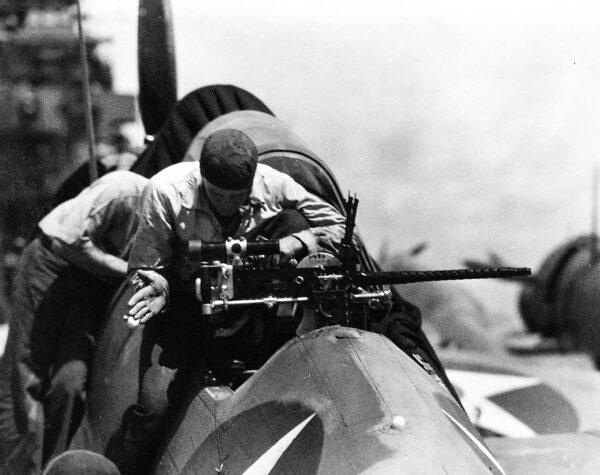
A Reimagined Production Process
Saginaw Steering Gear’s brilliant engineers turned the manufacturing process on its head. Working in an environment that would not take no for an answer, the engineers disassembled the test guns, studied every component in microscopic detail, and developed an entirely new assembly-line process for firearms manufacturing. In the spirit of Henry Ford, the plant managers performed motion and time studies on their employees to work out the most efficient layout of the facility.Having already developed a metal casting operation for gearing, they adapted the process to the M1919. They replaced some of the complex machined parts—those that required being formed on milling machines or lathes, which depended on skilled labor—with cast pieces that equaled or exceeded the strength of the original parts. This slashed the amount of time-intensive manual operations per gun. The barrel shroud—the component that protected the barrel, perforated to dissipate heat—was originally machined, each hole drilled in the cylindrical blank by a skilled machinist. The Saginaw team replaced this whole process with hole-punched sheet metal, an automated process that shaved crucial minutes off the production of each gun. Faced with a tedious but critical barrel washing process before each inspection, the engineers rigged up an automatic barrel washer, which alone increased production by 50 percent per hour.
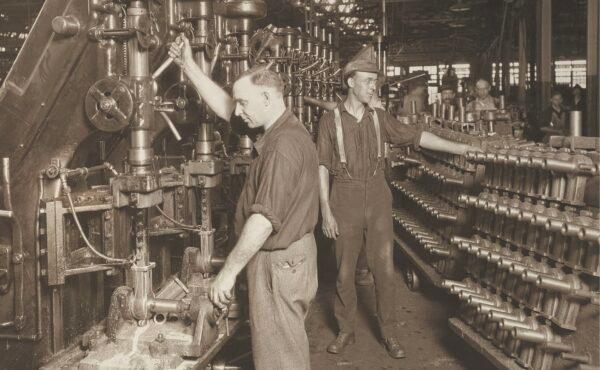
Arsenal of Democracy
While some at the War Department had groused when the contract was awarded to a company with no firearm manufacturing experience, the delivery of the first pilot gun a full seven months ahead of schedule won over Saginaw’s detractors. The factory entered full production, with the production contract calling for 280 guns to be delivered at a price of $667 per gun by March 1942. Saginaw Steering Gear delivered more than 28,700 guns, and, in service of their country, reduced the price to only $141.44 per gun—more than 100 times the units at 20 percent of the original contract price. But they were just getting started. By war’s end, with production at full swing in a plant dedicated to the task, Saginaw Steering Gear had built and shipped a staggering 412,000 Browning M1919s and unilaterally reduced the price to only $54.72 per unit—8 percent of the original bid. They had managed to reduce the man hours per gun from 76 to 19; saved the war effort more than $240 million in 1945 dollars; and their clever use of casting, part simplification, and streamlining preserved untold hundreds of tons of steel for building aircraft, ships, and tanks.By the end of the war, the United States of America had earned the title the “arsenal of democracy.” More than half of all Allied matériel—that is, all the weapons, vehicles, ammunition, and other accoutrements of war—were manufactured in the United States and shipped overseas to her allies. Nearly all Americans played a part in this heroic feat of production and did so freely and with a sense of duty and patriotism. Saginaw Steering Gear’s machine guns were mounted to British aircraft and Soviet tanks and carried into battle by American GIs in the jungles of Guadalcanal and the hedgerows of Normandy. By applying the classic American entrepreneurial spirit to the problem of equipping an army, Saginaw Steering Gear proved that free men and women can achieve wondrous things.

